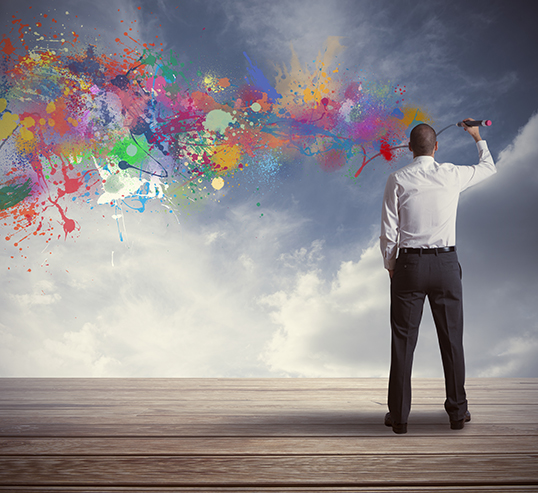Creativity is not Just for Artists Anymore
The Emerging Trend of Looking at Business from an Artist’s Perspective
When many of us hear the word “creative,” we so often envision artists and graphic designers. Yet there is a new undercurrent of thought emerging in the business world surrounding creativity and its impact for more than just branding and innovation.
Courtney Feider, the latest addition to the Price Associates team, talks with us about practicing creativity, the power of failure, and why she believes that all people are creative. Courtney is a Creative Disruption Strategist who specializes in helping companies identify and build upon untapped creativity in their cultures.
How has the stereotype of a “creative” person produced limits in the workplace?
Even as recently as the late ’90s, “creatives” were boxed into specific roles: as copywriters, graphic designers, illustrators, or people from “the agency.” Now it’s clear that the creative frame of mind contributes to advances in business leadership across all facets. Creative thinkers have been ahead of the curve their whole lives, and it used to be something that got them ostracized. Now, it’s an asset.
Why is creativity important in the workplace?
We are seeing a shift in the business world: leaders are starting to both understand and value the integral role that creativity plays in innovation and growth. Looking at things from an “artist’s perspective” presents a whole new way to deal with operational strategy, branding, culture, talent management, and filling the growing leadership gap.
For example, creative leaders have the ability to look at candidates and see how their unique talents will form alchemy to elevate the business situation. Creative leaders are also good diplomats, since they are used to explaining the creative process and the thought behind their ideas.
Creatives are truly sleeping giants in the workplace. They are game changers because of their natural ability to bridge generations and to think on their feet. Creative people also tend to be very observational. They take in the world with a sensitive eye, see the layers that exist, and determine how the elements combine to create the most dynamic organizational result.
Most importantly, they are OK with failing because they recognize it as part of the creative growth process and the next step toward progress. Creatives are resilient and resourceful. They “fail up”—they are constantly working and changing to develop something better.
You have said, “All people are creative.” What do you mean by that?
I believe that everyone hits a point of creative acceleration or creative prohibition, typically at a very young age. There may have been a point in your life when you thought, “I’m not creative,” or maybe you were encouraged to think practically instead of creatively. That’s the moment you stopped developing your creative mind and talents. There are many types and sources of creativity, and it’s really the suppression of creativity that stops people from thinking they have this skillset.
There are four types of creatives: inventors, entrepreneurs, fine artists, and thought leaders. Nearly everyone falls into some place on this spectrum, and developing creativity as a skill is simply a matter of practice. The practice of creativity itself can unleash new potential and innovation.
You talk a lot about “creative disruption.” What is that?
Creative disruption is a chosen point of innovative transition. It’s seizing a new solution and moving in a dynamic, yet structured new direction. Aimless “flexibility” isn’t effective in the workplace, but structured, strategy-based, ROI-focused creative disruption is a turning point for organizations. It’s the thing that follows the realization that you need to innovate, and precedes the implementation. It’s the first point of thoughtful, engaged action.
What is your favorite part of the work you do?
I love working with both groups and individuals, but I am most rewarded by speaking with people one on one and hearing the stories of how creative disruption has not only turned around a business situation for them, but also allowed them to develop resilience, resourcefulness, and genuine balance. That’s huge. The biggest need for today’s executive is the ability to mitigate stress and find balance between work and life.


